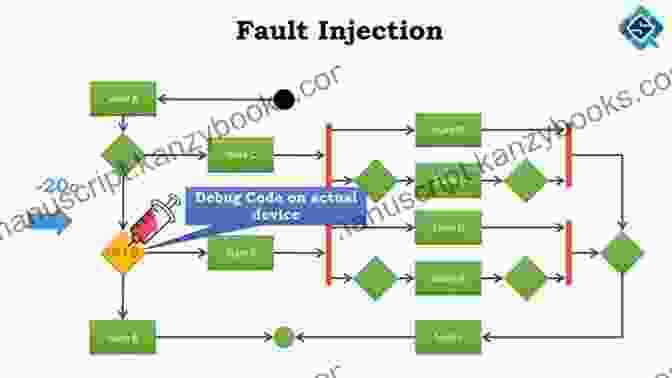Three Liability Regimes for Artificial Intelligence: Unraveling the Legal Matrix

Artificial intelligence (AI) is rapidly transforming our world, bringing unprecedented opportunities and challenges. As AI systems become more sophisticated and integrated into various aspects of life, the legal implications surrounding their use and potential risks have become increasingly complex. One of the most pressing issues is the determination of liability in the event of harm or injury.
4.3 out of 5
| Language | : | English |
| File size | : | 2523 KB |
| Text-to-Speech | : | Enabled |
| Enhanced typesetting | : | Enabled |
| Print length | : | 199 pages |
| Screen Reader | : | Supported |
This article aims to provide a comprehensive overview of the three primary liability regimes for artificial intelligence:
- Strict Liability
- Fault-Based Liability
- Risk-Utility Balancing
Strict Liability
Strict liability is a legal doctrine that holds a party responsible for harm or injury, regardless of fault or negligence. In the context of AI, strict liability may be imposed on the manufacturer, owner, or operator of an AI system if it causes damage. This liability is often based on the principle that the party that benefits from the creation and deployment of AI should bear the risks associated with its use.

Strict liability can be a powerful tool for holding parties accountable for AI-related harm. However, it can also create significant financial and legal risks for businesses and organizations that develop and use AI.
Fault-Based Liability
Fault-based liability is a legal doctrine that holds a party responsible for harm or injury only if they acted negligently or intentionally caused the harm. In the context of AI, fault-based liability may be imposed on the manufacturer, owner, or operator of an AI system if they failed to take reasonable steps to prevent harm. Negligence may include failing to properly test or maintain the AI system, failing to provide adequate instructions or warnings, or failing to anticipate foreseeable risks.

Fault-based liability is often more difficult to prove than strict liability, as the plaintiff must demonstrate that the defendant acted negligently. However, it can provide a more flexible and equitable approach to liability, as it allows for the consideration of the defendant's conduct and the circumstances of the harm.
Risk-Utility Balancing
Risk-utility balancing is a legal doctrine that considers the risks and benefits of an activity or product when determining liability. In the context of AI, risk-utility balancing may be used to determine whether the benefits of using an AI system outweigh the risks of harm. This balancing approach may involve considering factors such as the severity of the potential harm, the likelihood of harm occurring, and the availability and cost of alternative solutions.

Risk-utility balancing can provide a more nuanced approach to liability, as it allows for the consideration of a range of factors in determining responsibility. However, it can also be difficult to apply, as it requires a careful weighing of complex and often subjective factors.
The determination of liability in the context of artificial intelligence is a complex and evolving legal issue. The three liability regimes discussed in this article provide a framework for understanding the potential legal challenges and responsibilities surrounding AI deployment.
As AI continues to advance, it is essential that legal systems adapt to ensure that liability is allocated fairly and that responsible and ethical use of AI is promoted. By understanding the different liability regimes, stakeholders can better navigate the legal landscape and mitigate the risks associated with AI development and use.
4.3 out of 5
| Language | : | English |
| File size | : | 2523 KB |
| Text-to-Speech | : | Enabled |
| Enhanced typesetting | : | Enabled |
| Print length | : | 199 pages |
| Screen Reader | : | Supported |
Do you want to contribute by writing guest posts on this blog?
Please contact us and send us a resume of previous articles that you have written.
 Book
Book Novel
Novel Page
Page Chapter
Chapter Text
Text Story
Story Genre
Genre Reader
Reader Library
Library Paperback
Paperback E-book
E-book Magazine
Magazine Newspaper
Newspaper Paragraph
Paragraph Sentence
Sentence Bookmark
Bookmark Shelf
Shelf Glossary
Glossary Bibliography
Bibliography Foreword
Foreword Preface
Preface Synopsis
Synopsis Annotation
Annotation Footnote
Footnote Manuscript
Manuscript Scroll
Scroll Codex
Codex Tome
Tome Bestseller
Bestseller Classics
Classics Library card
Library card Narrative
Narrative Biography
Biography Autobiography
Autobiography Memoir
Memoir Reference
Reference Encyclopedia
Encyclopedia Eyal Cohen
Eyal Cohen Janine Vance
Janine Vance Francesca Marks
Francesca Marks Tricia Mccannon
Tricia Mccannon Sabrina Moore
Sabrina Moore Evan Bloom
Evan Bloom Fran Lewis
Fran Lewis Erica Silverman
Erica Silverman Randy Brown
Randy Brown Eva Snow
Eva Snow S L A Marshall
S L A Marshall Fred B Craddock
Fred B Craddock Fonda Lee
Fonda Lee Kiddy Press
Kiddy Press Fred Beisse
Fred Beisse Erin Alderson
Erin Alderson Fatih Kecelioglu
Fatih Kecelioglu Ernest P Chan
Ernest P Chan Karen George
Karen George Eveline Lang
Eveline Lang
Light bulbAdvertise smarter! Our strategic ad space ensures maximum exposure. Reserve your spot today!

 Vincent MitchellThe Explosive Story of the 30 Lost Years and the Ancient Mystery Religions
Vincent MitchellThe Explosive Story of the 30 Lost Years and the Ancient Mystery Religions
 Federico García LorcaUnlock Culinary Wonders: Healthy And Easy 164 Modern Pressure Slow Cooker...
Federico García LorcaUnlock Culinary Wonders: Healthy And Easy 164 Modern Pressure Slow Cooker... Mario Vargas LlosaFollow ·2.5k
Mario Vargas LlosaFollow ·2.5k William GoldingFollow ·16.9k
William GoldingFollow ·16.9k James HayesFollow ·19.7k
James HayesFollow ·19.7k Fletcher MitchellFollow ·3.5k
Fletcher MitchellFollow ·3.5k Pat MitchellFollow ·6.9k
Pat MitchellFollow ·6.9k Robert BrowningFollow ·2.8k
Robert BrowningFollow ·2.8k Harvey HughesFollow ·14.6k
Harvey HughesFollow ·14.6k Jerry HayesFollow ·18.1k
Jerry HayesFollow ·18.1k

 Ivan Turgenev
Ivan TurgenevUnlock Your Thyroid's True Potential: Healing Hashimoto...
The Empowering...

 Patrick Hayes
Patrick HayesBeyond Hot Yoga: Journey into the Depths of Patterns,...
Beyond the sweltering heat of a hot yoga...

 Mike Hayes
Mike HayesFor Dynamic Power Superior Athletic Performance And...
Unleash the Power Within:...

 Jason Reed
Jason ReedUnveiling the Enigma of Glaucoma: A Comprehensive Guide...
Glaucoma, a leading cause of irreversible...

 Michael Chabon
Michael ChabonHebridean Sea Swimmers: Gress Beach
A Journey into...

 Drew Bell
Drew BellJourney to Healing: A Bridge to Hope and Restoration
In the tapestry of life, we encounter...
4.3 out of 5
| Language | : | English |
| File size | : | 2523 KB |
| Text-to-Speech | : | Enabled |
| Enhanced typesetting | : | Enabled |
| Print length | : | 199 pages |
| Screen Reader | : | Supported |








